A GANGLAND SLAYING AT 162 COURT (1922)
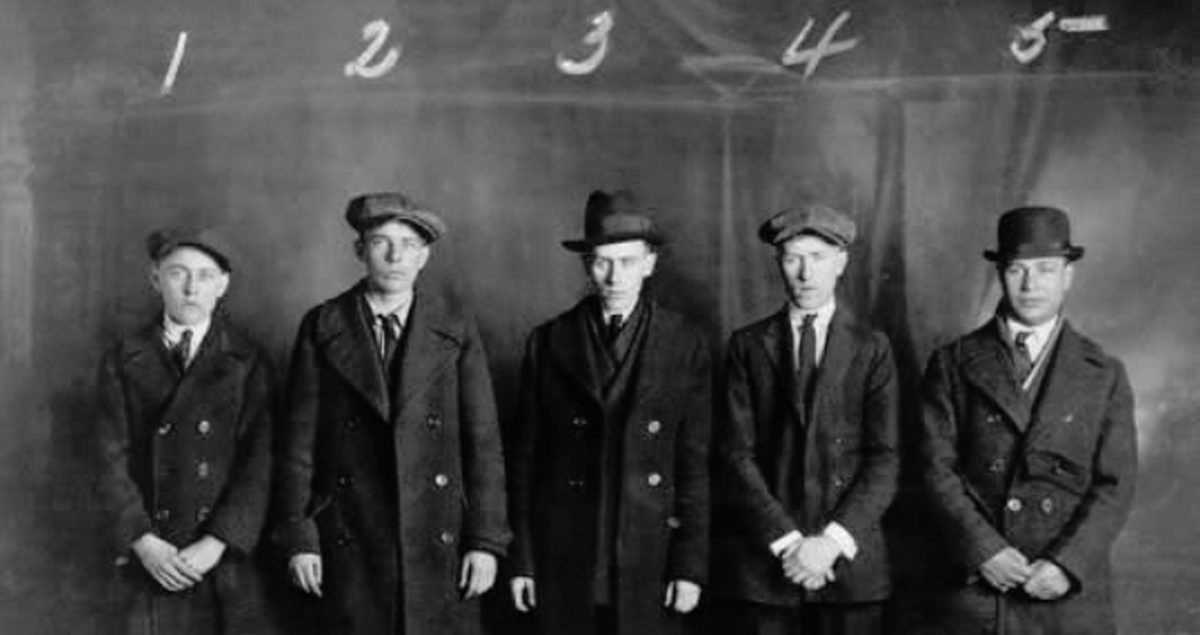
Brownstone Detectives investigates the history of our clients’ homes.
The story you are about to read was composed from research conducted in the course of one of those investigations.
Do you know the history of YOUR house?
********************************************************************************************************************************
Above: The “Navy Yard Gang,” (l to r), (1) Stephen Collins, (2) John Keogh, (3) William Evans, (4) Frank Evans, and (5) Pellegrino Mucci
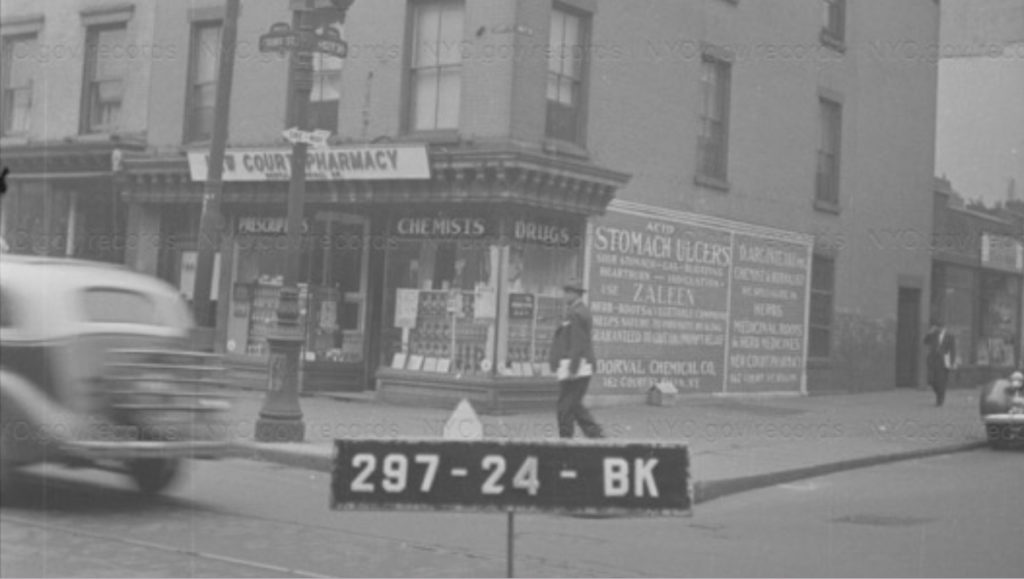
On a frigid February evening in 1922, three young men stepped into the dimly lighted drugstore at No. 162 Court street in Cobble Hill. Druggist Paul J. Gillman, looking up from behind his counter, suspected something was up – the men, who seemed to be barely out of their teens, moved with a sense of purposelessness filled with less-than-good intentions.
Gillman noticed as the first young man, who stood by the case in front of his prescription counter, pulled something from his coat and then began to walk towards the passageway leading to the place behind the counter where Gillman stood.
“I just stood at the entrance and pointed the gun at him,” the gunman, William Evans, 23, of No. 24 Fort Greene Place, later explained to the police. “I told him to put his hands up.”
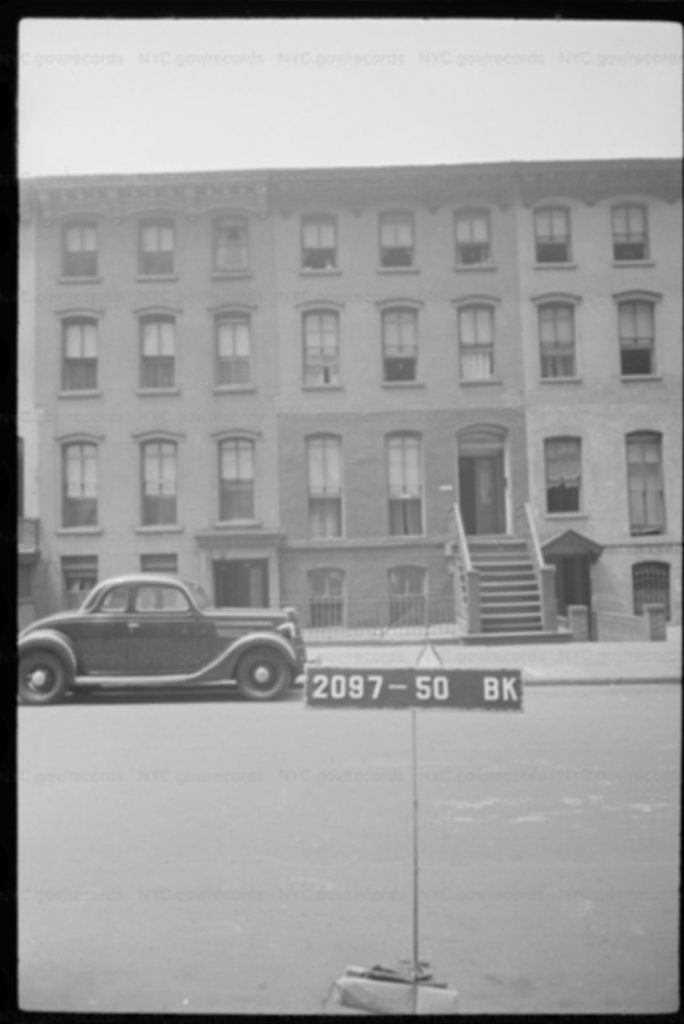
The night, which was planned to be spent on a simple hold-up, would not turn out as the members of the “Navy Yard Gang” had expected, however, as Gillman would not be encouraged by what he certainly thought were young boys attempting to get away with a prank.
Gillman, not complying with the gunman’s orders, did quite the opposite. He moved toward Evans and tried to push him out of the store.
“He grabbed my left arm with his right arm and there was a scuffle as he tried to push me out,” Evans recalled. “When he saw the gun he grabbed hold of me with both arms. He started to shove and push me. He took hold of my pistol-hand.”
That was when “the shot was fired,” Evans recalled, who claims to have been “drunk at the time the trigger was pulled.”
The druggist suddenly gave a look of surprise, exclaiming something, and then fell backwards. Evans coolly pocketed his handgun, as his brother, Frank Evans, 21, also of No. 24 Fort Greene Place, who had been standing on the other side of the counter, drew his own gun and advanced to where his brother stood over the dying druggist.
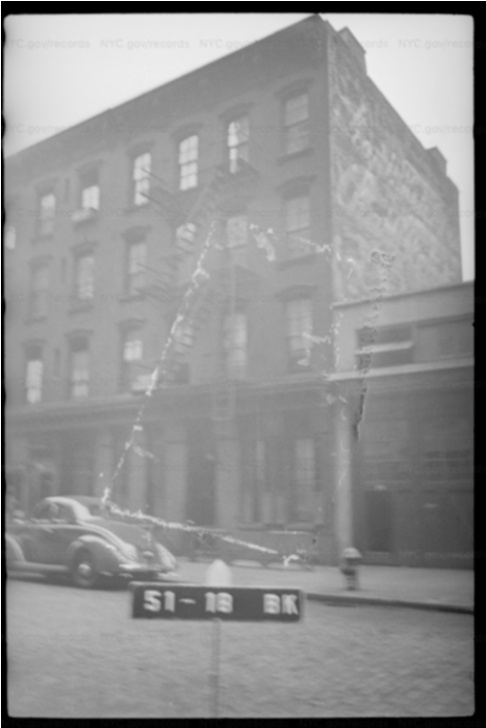
The third man, Johnny Keough, a boy of 16, of No. 216 York Street, moved quickly to the cash register as the Evans brothers started to the rear with their weapons drawn. Keough, who spotted a key sitting atop the register, tried the key in the register’s locked drawer, but he could not get the machine open.
After a brief period, the entire crew, fleeing the building, were joined by their lookout, Stephen Collins, 20, of 133 Gold Street, who had been standing watch at the corner of Amity and Court streets. All of the gang members climbed into a car they had stolen just hours before, and drove back to the Navy Yard section of Brooklyn. At No. 102 Front Street they hid their guns in a mattress.
HOW A DIAMOND PIN BROKE THE CASE
Within the next 24-hour period after the slaying, police confessed to being dumbfounded as to who was responsible for the heinous act. But as it so often happens, it would be a lead in another case that quickly led to another suspect fingering the members of the Navy Yard Gang and disrupted their brief period of freedom.
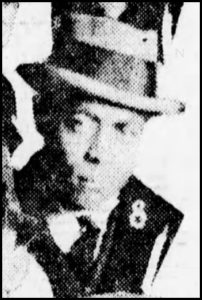
A Detective Brosnan, standing outside the Orpheum Theatre (which today is where the Brooklyn Arts Museum stands on Fulton Street) working another case, had been observing Philip (Felix) Santano, of No. 111 Prince Street, a “member of a group of loose living young men who have been regarded with suspicion by the police for months.”
As Santano walked by, Brosnan noticed Santano “wearing a gaudy diamond pin, which was new to his make-up.” Brosnan “knew enough of the young man’s habits to be sure the money to buy such a pin had not been earned by him recently, and telephoned to headquarters for help in trailing him.”
As a result of his action, the police arrested and arraigned “ten young men of Santano’s sort,” including four who, according to the police, “confessed murdering Paul J. Gillman in his drug store on Court Street.”
The others were charged with numerous highway robberies and store hold-ups in Manhattan and Brooklyn, in which, according to the police, they each, in turn, implicated each other in their statements.
The detectives “talked to them persuasively” and from them got the names of William and Frank Evans, John Keough, and Stephen Collins.
It was from these four men that the detectives reported they had gotten the story of the murder of Druggist Gillman.

WILLIAM EVANS HAD A LONG RECORD
William Evan had the longest criminal record of the four of the men implicated in the death of Druggist Gillman. On 30 December 1915, he was sent to the House of Refuge after a conviction of burglary, and in April 1919, he received a suspended sentence on a grand larceny charge. His brother, Frank, received a suspended sentence on a grand larceny conviction in 1919.
As their trial was about to begin, every detail off the suspects’ lives was recounted. Their descriptions, provided at their arraignment, gave the public a view of who these men were:
William J. Evans, 23, married, of 24 Fort Greene Place; his wife about to become a mother. Received suspended sentence in 1918.
Frank Evans, 21, driver, single, whose home is at 97 Clinton Avenue, brother of William, who was at the heels of the actual murderer, also with a drawn gun. Is out on a suspended sentence in larceny case.
John Keough, 16, 216 York Street, charged with acting in concert with the Evans brothers, the youth who tried in vain to turn the twisted key in the drawer of the cash register before the shooting.
Stephen Collins, 20, 133 Gold Street, who has confessed that he acted as lookout and who stationed himself at the corner of Amity and Court streets, about 20 feet from the front door, while the other three went inside.
The magistrate during the arraignment referred to William Evans as a “cigarette eating” youth, and the press, eating the story up like fresh liver fed to feral cats, saw Keough and Collins as “mere boys.
“The faces of all are weak and flabby but the sickly looking youth who fired the shot which ended the life of the peaceful druggist is the weakest looking one of the quartet,” noted the Brooklyn Daily Eagle. “He weighs about 115 pounds. A good straight arm blow to the jaw would probably have taken all the fight out of him….The wisp of a youth had taken part in several holdups before the killing of Gillman.”
William Evans, after their interrogation was over, expressed indifference as to his fate.
“Oh, I have the ‘con,'” he said. “Why should I care what happens to me?”
So, what did happen to Evans? He was charged with murder in the first degree and sentenced to die by electrocution.
EVANS GETS THE CHAIR
William J. Evans, the trigger man in the death of Druggist Gillman, although he attempted to gain leniency by relying on his state of drunkenness at the time of the shooting, and alleging that Gillman’s drugstore had been a notorious bootlegging resort, was given the death sentence. His brother, Frank, was permitted to plead guilty to murder in the second degree. He received a mandatory sentence of from 20 years to life imprisonment. The other two accomplices pleaded guilty of manslaughter in the first degree, which came with a maximum sentence in Sing Sing of from 10 to 20 years.
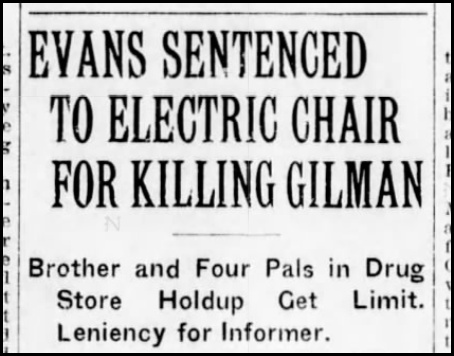
The lesser pleas were admitted from the three men when it was learned that William Evans was the brains of an organized gang of robbers and thieves operating throughout Brooklyn, and that Frank Evans, Keough and Collins were “but his tools.”
After ringleader Evans’ trial was completed, the judge in the case, George W. Martin, read his sentence.
“I sentence you to be taken to Sing Sing Prison, to be placed in solitary confinement and to be put to death according to law during the week of May 15.”
Evans, whose nervousness marked him during the trial, was perfectly collected when he stood before Judge Martin. There was even a trace of a smile playing around the corners of his mouth. His facial expression did not change when he heard the death penalty announced, and he swaggered from the courtroom, a court attendant on either side.
POSTSCRIPT
After William J. Evans was electrocuted, and while Frank Evans was serving his time for his involvement in the murder of Paul J. Gillman, the other accomplices spent their shorter time in prison for their lesser roles in the slaying. Collins, the lookout, would end up dying in prison before 1933.
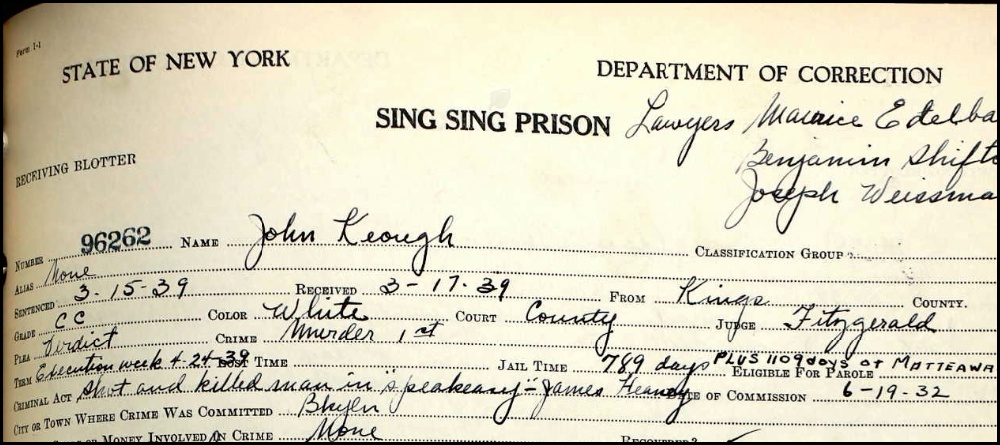
Eleven years later in 1933, John J. Keough, who had been in the drugstore at the time of the shooting and had tried to rifle the cash register, was a free man after having served just a portion of the “10 to 20” he had received for his part in the murder.
Now, accused once again of another crime, he was facing, much more important charges and a much stiffer sentence this time. He was accused of murdering a speakeasy proprietor that year. At the start of that trial, Keough pulled the same sort off stunt his fellow accomplice had pulled 11 years earlier, claiming “prison psychosis” in order to delay his trial. His claim of insanity, once investigated, was approved.
By 1936, three years after the insanity plea, Keough was discharged from Matteawan State Hospital for the Criminally Insane – a “cured” man. A jury was quickly formed which found him guilty of murder in the first degree and he was sentenced to be electrocuted. After a 1937 Court of Appeals reversed the conviction and ordered a new trial, he was convicted yet again in 1939, and sentenced one more time to be electrocuted.
In 1940, just a “scant 24 hours” before he was to die in the electric chair, though, Governor Herbert Lehman, citing the near split decision of the jury the year before, commuted his death sentence to life imprisonment.
In the end, Keough would never gain his freedom again. He would spend the rest of his life imprisonsed, dying eventually behind bars.
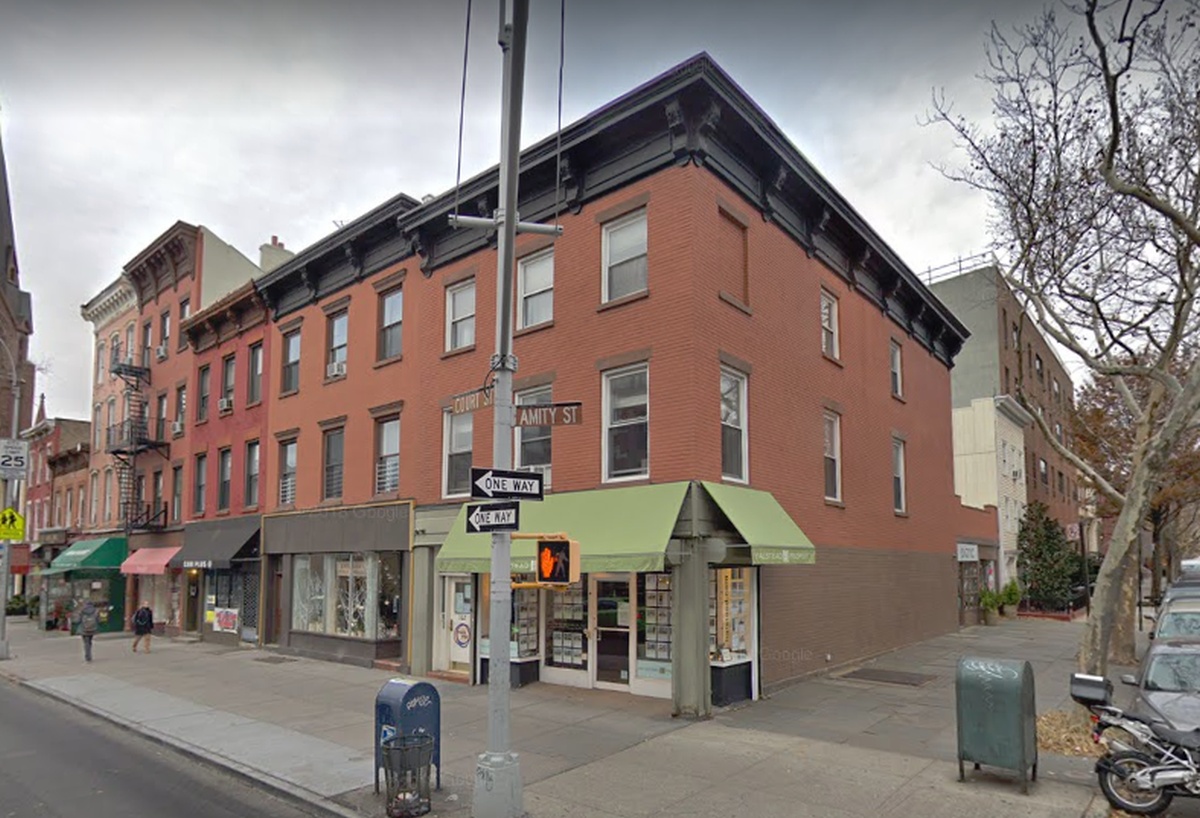
———————————————————————————————————————–
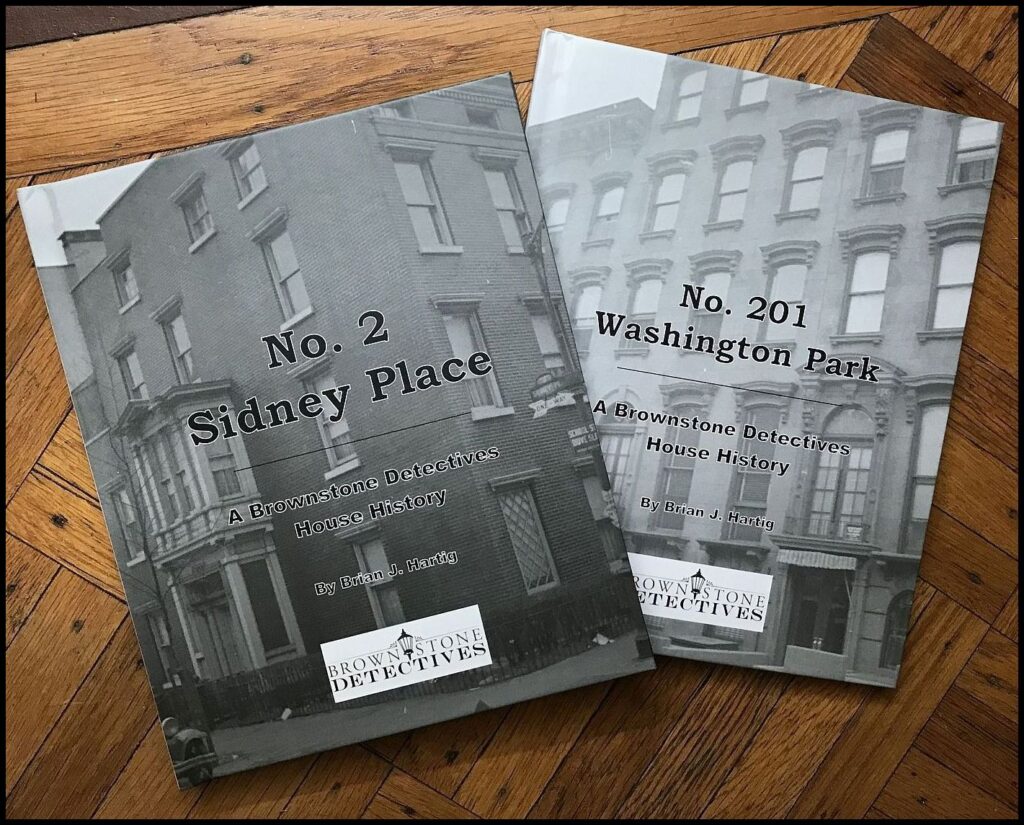 Brownstone Detectives is an historic property research agency. Our mission is to document and save the histories of our clients’ homes. From our research, we produce our celebrated House History Books and House History Reports. Contact us today to begin discovering the history of your home.
Brownstone Detectives is an historic property research agency. Our mission is to document and save the histories of our clients’ homes. From our research, we produce our celebrated House History Books and House History Reports. Contact us today to begin discovering the history of your home.